Recently, an experimental play called "Nguyen Du with Kieu" staged by People's Artist Lan Huong, brings the audience a new view on "The Tale of Kieu". It is an epic poem in Vietnamese written by Nguyen Du (1766- 1820) that is widely regarded as the most significant work of Vietnamese literature.
After many years of nourishing the idea of renewing the expression of “The Tale of Kieu” as a play, People’s Artist Lan Huong, Head of the Experimental Play Troupe of the Youth Theatre, successfully staged “Nguyen Du with Kieu” with support from the Vietnam Stage Artists’ Association and the International Theatre Institute (I.T.I). It was a daring experiment because for a long time the Vietnamese audiences were familiar with “The Tale of Kieu” through traditional artistic performances like poem reciting, Cheo (traditional operetta), Cai Luong (reformed theatre) and Tuong (classical drama).
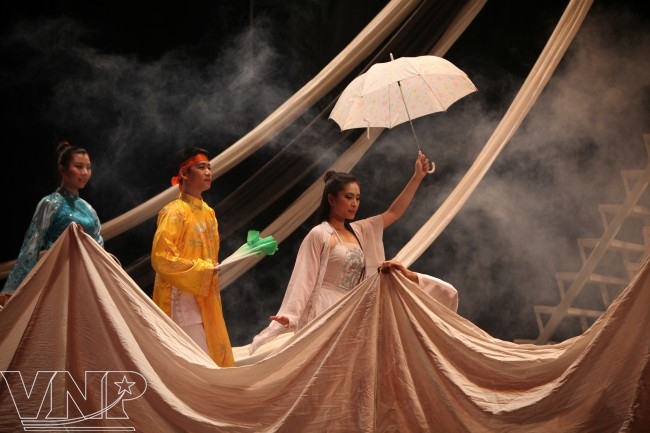
Thuy Kieu, her brother and younger sister in the first part of the story. Photo: Tat Son |
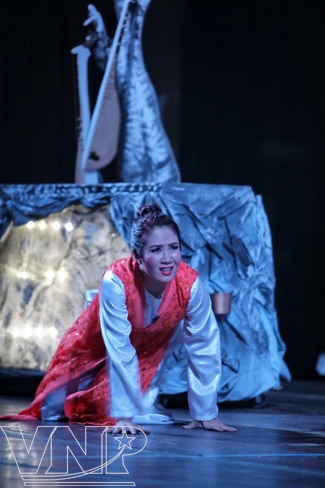
The story begins with the mother giving birth to Thuy Kieu.
Photo: Tat Son |
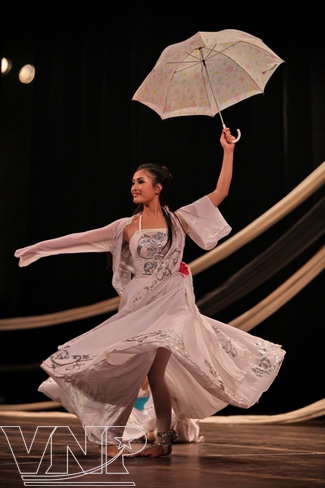
The beauty of Thuy Kieu is shown through a dance.
Photo: Tat Son |
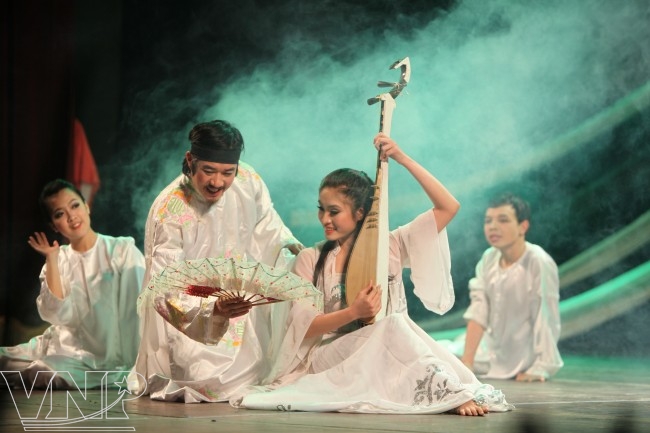
Thuy Kieu meets and then falls in love with Kim Trong. Photo: Tat Son |
In the play, the unfortunate life of Kieu is expressed through poetry and body drama art. Director Lan Huong skillfully combines different traditional artistic genres, including poem reciting, Cheo (traditional operetta) singing, Hat van (singing chants for a trance or sance), Hat xam (minstrel’s singing) and Ca hue (singing folk songs in Hue) to reveal the bitterness and the miserable fate of Kieu during her 15-years of drifting. The play’s presenter recites poems in the “Tale of Kieu” to tunes of the localities where Kieu drifts. Therefore, the audience has a chance to enjoy songs about Kieu in different styles.
Besides the art of poetry drama, the art of body drama is also used to reflect the soul and innermost feelings of characters through each movement of the body.
On a simple and symbolic stage, the combination between modern arrangements and ancient costumes creates an interesting contrast in the image of the play and avoids the normal expression of the traditional play, bringing a new feeling to the audience.
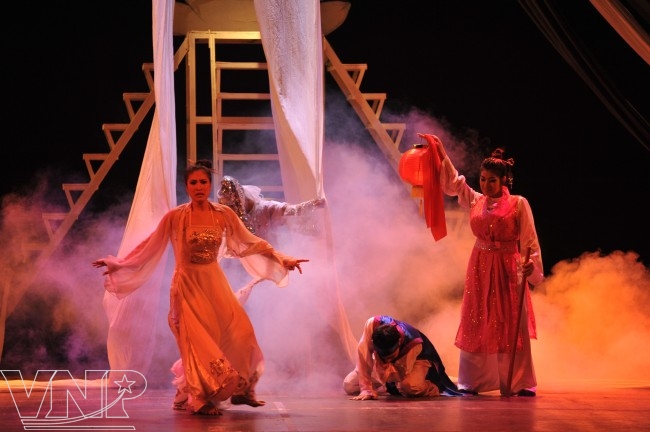
Kieu is sold into a brothel. Photo: Tran Thanh Giang
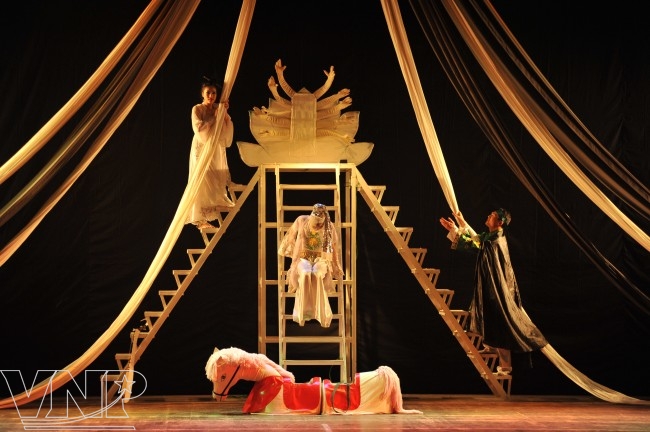
Thuy Kieu is mistreated in a brothel. Photo: Tran Thanh Giang
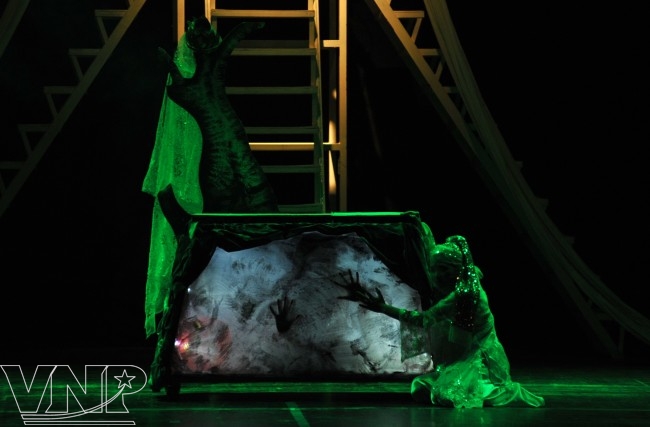
A scene shows the misery of Thuy Kieu. Photo: Tran Thanh Giang |
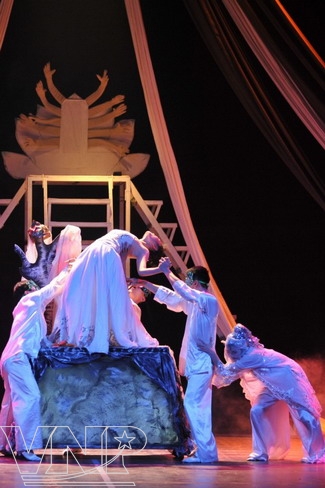
A scene shows the misery of Thuy Kieu.
Photo: Tran Thanh Giang |
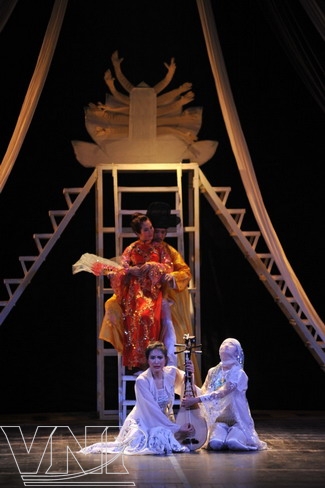
Thuy Kieu is forced to meet a whoremaster.
Photo: Tran Thanh Giang |
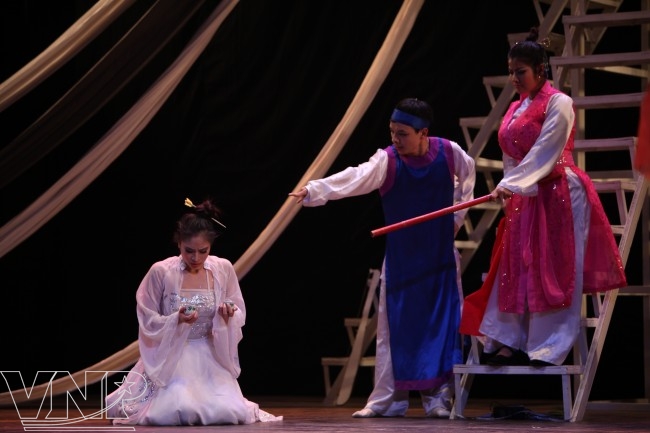
A scene shows the shameful living of Thuy Kieu in a brothel. Photo: Tat Son

Tu Hai rescues Thuy Kieu from the brothel. Photo: Tran Thanh Giang
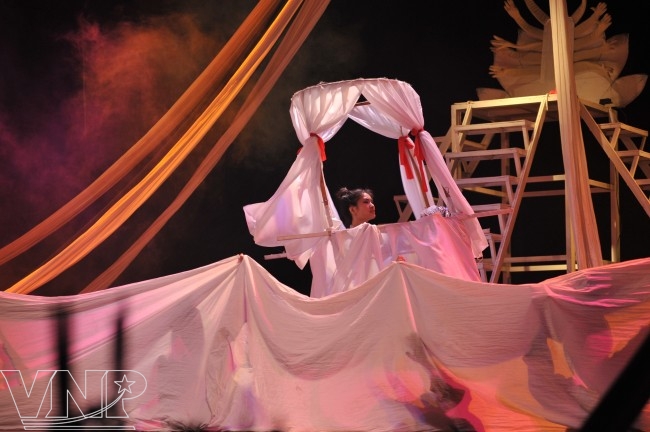
Showing the miserable fate of Kieu during her 15-years of drifting. Photo: Tat Son
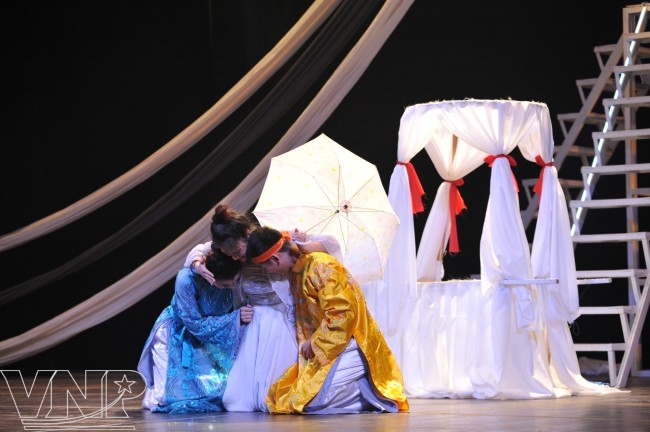
Kieu reunites with her family after 15 years. Photo: Tran Thanh Giang
|
A special feature of the experimental play is that besides turning the character who plays the role of Nguyen Du into the play’s presenter, Lan Huong also created the play’s second presenter, poet Ho Xuan Huong who was a contemporary of writer Nguyen Du and famous for her thoughts of women’s liberation in the feudal regime. Although the character is fictional, it helps reveal the miserable life of Kieu in particular and women in the feudal regime in general.
Lan Huong also asked one artist to play different roles in the play. For example, actor Nhu Lai plays the roles of Nguyen Du, Kim Trong, Thuc Sinh, Tu Hai and even So Khanh. Each character has his own personalities that require the actor to perform different feelings. It is also a new experiment on the Vietnamese drama stage.
“Nguyen Du with Kieu” is considered a successful experimental play about a familiar theme that is very difficult to renew because of its classicism. The play brings about a new view and perception about drama using traditional themes.
Story: Vinh Hung - Photos: Tat Son - Tran Thanh Giang
Story: Vinh Hung - Photos: Tat Son - Tran Thanh Giang